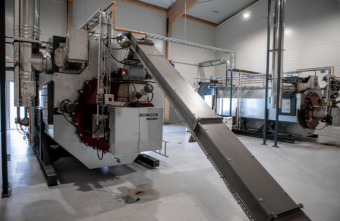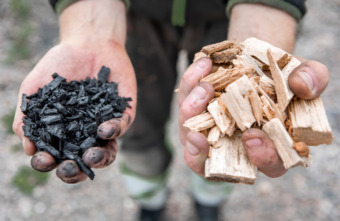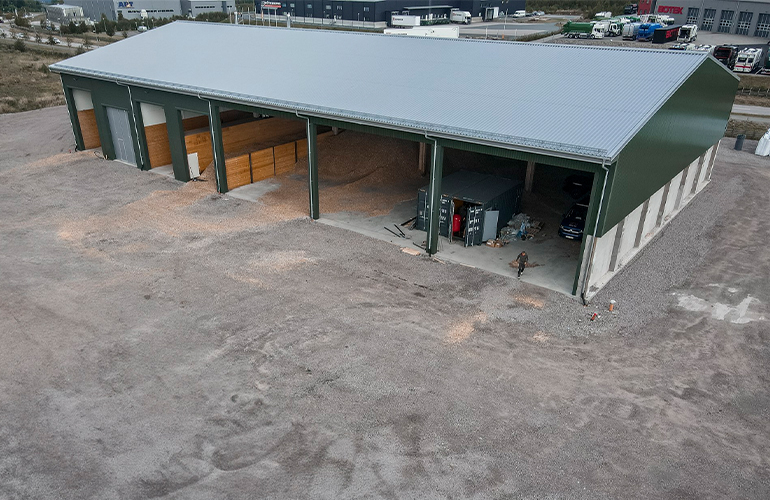In a bid to further develop its biochar business, Solör Bioenergi Group, a leading Scandinavian player in renewable wood-based energy, has announced that it entered into a collaboration with two local entrepreneurs in Sjuhärad region, southwest Sweden. A new biochar facility has been built in Ulricehamn and Solör's existing district heating facility in Herrljunga has been supplemented with biochar production.
The jointly owned company now produces biochar that captures biogenic carbon dioxide (bioCO2), while supplying heat to the district heating networks.
The partners are looking forward to the future, and the goal is to increase biochar production.
We teamed up with two local entrepreneurs to jointly produce biochar, which is very exciting. Production has been in full swing in both Ulricehamn and Herrljunga for some time now. We complement each other well – we both have previous experience of district heating and biochar production from slightly different perspectives, and together we can build on the concept, said Erica Edfeldt Wehtje, Technical Manager at Solör Bioenergi.
Heat and carbon capture
Biochar is produced through pyrolysis – a process where organic material is heated in an oxygen-poor environment. This creates biochar and heat.

The heat is fed into the district heating network, while the biochar can be used for soil improvement, which means that the biochar is stored in the soil and thus binds the biogenic carbon dioxide for a long time – pyrolysis with carbon capture and storage (PyCCS).
There are also other possible uses for biochar, such as a replacement for fossil coal in the metallurgical industry. The feedstock used to produce biochar is the same fuel used to produce district heating – wood pellets or woodchips.
Erik Öhlund, one of the entrepreneurs who has entered into the collaboration, is positive that production is now underway.
We put a completely new facility into operation before the summer in Ulricehamn. It is an optimized facility with a specially developed boiler that allows us to extract more biochar from the fuel we use – in our case, regular woodchips. Solör’s facility in Herrljunga has been supplemented with a biochar boiler to be able to produce biochar from pellets, Erik Öhlund said.
Enable year-round operation
The facility in Ulricehamn requires around 10,000 m3 per annum of woodchips, which are sourced locally around Ulricehamn.
The drier the woodchips, the more biochar can be produced. Therefore, during the summer, when demand for district heat is lower, the heat is used to dry the woodchips, which means that the boilers can operate year-round.
An important goal for us is to show how district heating production can be made climate-negative. We capture carbon dioxide, produce heat, and deliver biochar, which means that every customer to the district heating network contributes to a positive climate effort, explained Erik Öhlund.
Growing biochar market

Solör has already biochar production at its district heating plants in Skurup, Svedala, and Munka-Ljungby in the Skåne region, and these combined produced over 2,900 m3 of biochar in 2023.
At these plants, as well as for the plant in Herrljunga, Solör is responsible for the production and operation of the district heating networks.
In Ulricehamn, another third party buys the district heating that is produced.
The biochar we produce is mainly used as a soil improvement agent. It has very good properties for the soil – it retains water and reduces the need for nutrient supply. We develop products for topsoil and sell to contracting and land development companies. It is used, among other things, when laying lawns in new residential areas, said Erik Öhlund.
If the biochar is stored, for example, during soil improvement, carbon dioxide removals (CDR) are generated.
These carbon credits can be monetized as a product to individuals and organisations that wish to reduce their climate footprint, for example, on Voluntary Carbon Markets (VCM).
The market and technology for biochar is something that is under development. Therefore, it is valuable to collaborate with other players, remarked Erica Edfeldt Wehtje.



